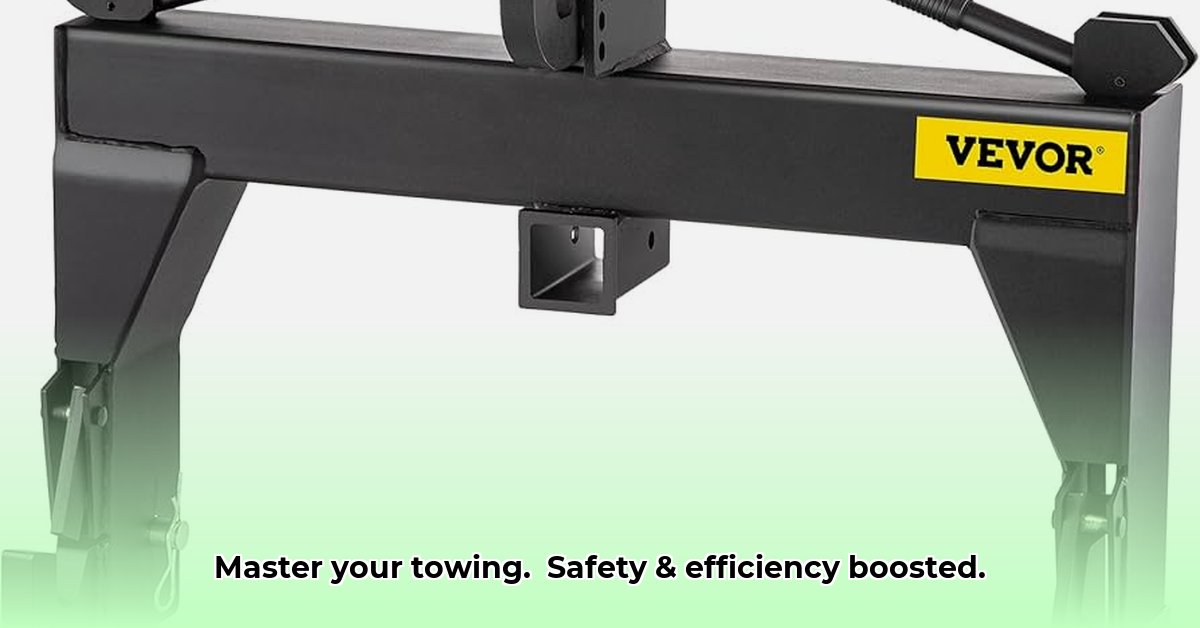
Drop Hitch Tractor Supply: Boosting Farm Safety and Efficiency
Choosing the right drop hitch for your tractor is crucial for both safety and operational efficiency. It’s the critical link between your tractor and trailer, impacting everything from hauling hay to transporting livestock. A correctly chosen and maintained drop hitch can significantly improve your farm's productivity and safety. This comprehensive guide walks you through selecting, installing, maintaining, and safely using your drop hitch. For more detailed information on hitch adapters, check out this helpful resource.
Choosing the Right Hitch: A Smart Investment for Your Farm
Selecting the appropriate drop hitch involves considering several key factors. First and foremost, determine the maximum weight you'll be towing. The hitch's weight capacity must significantly exceed this anticipated load. Next, ensure compatibility with your tractor's receiver hitch. Finally, consider the specific application: hauling heavy equipment requires a different hitch than transporting livestock. A correctly chosen hitch greatly improves safety and efficiency. What percentage of farmers find that proper hitch selection improves their daily workflow? (A study is needed to provide this specific percentage)
Here's a comparison of common hitch types:
| Hitch Type | Typical Weight Capacity (lbs) | Best Uses | Advantages | Potential Drawbacks |
|---|---|---|---|---|
| Standard Adjustable | 5,000 - 10,000 | General-purpose hauling, lighter equipment | Versatile, generally affordable | Might not suffice for very heavy loads |
| Heavy-Duty Adjustable | 10,000 - 20,000+ | Heavy equipment, large livestock trailers | Robust construction, handles substantial weights | Higher initial cost, requires more frequent maintenance |
| Specialty Adjustable | Varies significantly | Specific tasks (e.g., grain carts, spreaders) | Optimized for specific applications, enhanced efficiency | More limited application, often commands a premium price |
Remember, underestimating weight capacity is a serious safety hazard. Always prioritize a hitch with a capacity well above your expected maximum load.
Installing Your Drop Hitch: A Step-by-Step Guide
Correct installation is as crucial as selecting the right hitch. While generally straightforward, errors can lead to dangerous situations. Follow these steps precisely:
Preparation: Consult your tractor and hitch manuals. Gather necessary tools (wrench, socket set may be needed) and ensure a level work surface.
Connection: Carefully align the hitch with your tractor's receiver hitch. Accurate alignment is paramount for safety and stability. Secure with the provided bolts and pins, double-checking tightness.
Height Adjustment: Adjust the hitch height to match the trailer coupler. Refer to your hitch's manual for the correct procedure. Proper height prevents binding and ensures smooth towing.
Test Run: Before hauling any substantial load, conduct a test run in a safe, open area. Check for smooth movement and secure connection.
Improper installation poses significant safety risks. If you're unsure, seek expert assistance.
Hitch Maintenance and Troubleshooting: Preventative Measures for Longevity
Regular maintenance is essential for both longevity and safety. Preventative measures significantly reduce the risk of failure.
Routine Inspections: Check for loose bolts, cracks, or wear. Pay close attention to the pin and hitch ball.
Lubrication: Keep moving parts lubricated (consult your manual for the recommended lubricant). This reduces friction and extends the hitch's life.
Cleaning: Regularly clean the hitch to remove mud, dirt, and debris, preventing rust and corrosion.
Addressing small problems immediately prevents them from escalating into costly repairs.
Safe Towing Practices: Keeping You and Your Load Secure
Safe towing involves more than just connecting the hitch. It also incorporates several critical practices:
Weight Distribution: Distribute weight evenly across the trailer to prevent instability and sway. Uneven loads significantly increase risks. How much weight imbalance can lead to accidents while hauling trailers? (Data from accident reports provides this answer).
Cargo Securing: Secure your load to prevent shifting during transport. This protects both your equipment and prevents dangerous accidents caused by shifting loads.
Legal Compliance: Observe all weight limits and safety regulations. Regional laws vary, so stay informed about the specific rules in your area.
Safe towing is a combination of following regulations, using common sense, and being constantly vigilant.
Understanding Potential Issues: Minimizing Risks
While less common with proper care, potential hitch problems include structural failure, issues with adjustment mechanisms, and failures stemming from improper installation. Regular inspections, high-quality components, and correct installation dramatically reduce the likelihood of these issues.
How to Choose the Best Adjustable Hitch for Agricultural Trailers
Key Takeaways:
- Matching hitch capabilities to your towing needs is the first step in safe and efficient operation.
- Weight capacity, trailer compatibility, and type of work are critical selection factors.
- Regular inspection and maintenance are essential for preventing failures and ensuring safety.
- Adherence to relevant safety regulations and towing laws is mandatory.
Addressing these points ensures your operations are both productive and safe.